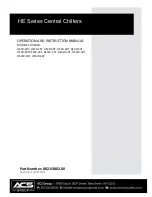
12
Operation
Operation
Type of Waste
Permitted
Size Limitations
Notes
Shredding
Dry or moist organic
material including leaves,
plants, flowers, fruits, or
vegetables.
Branches and twigs up to
1/2” diameter and 18” long.
Alternately chip or shred moist green
waste with dry waste to avoid plugging
of the discharge chute.
Process at a feeding rate that allows the
rotor to keep up and maintain a high rate
of speed.
Chipping
Long, thicker tree limbs or
small bunches of smaller
sticks grouped together for
ease of handling.
Tree limbs and branches, or
bundles of small sticks
grouped for easier handling.
Maximum diameter of
approximately 3” (7,6 cm).
Bulky tree limbs should be pruned close
to the main stem. Always use a shorter
piece of wood to push end pieces into
the chipper cone. Never place hands in
the chipper cone.
Never chip very hard or dry materials
such as kiln dried dimensional lumber
(2x4’s etc.) or other building materials.
Never use the chipper to process
pressure-treated wood products.
Vacuum
Attachment
Light, loose, dry waste such
as leaves, grass clippings,
or sawdust.
Small materials that will not
obstruct the vacuum hose.
The vacuum is engineered for small,
loose waste and for cleaning around
decorative landscaping and flower beds.
Twigs, wet leaves, and other bulky
materials will clog the hose or obstruct
the shredding chamber.
Storage
Before you store your unit for the off-season, read the
Maintenance and Storage instructions in the Safety
Rules section, then perform the following steps:
• Perform engine maintenance and storage measures
listed in the engine owner’s manual. This includes
draining the fuel system, or adding stabilizer to the
fuel (do not store a fueled unit in an enclosed
structure - see warning).
Before starting the unit after it has been stored:
• Check all fluid levels. Check all maintenance items.
• Perform all recommended checks and procedures
found in the engine owner’s manual.
• Allow the engine to warm up for several minutes
before use.
Chipping & Shredding Recommendations












































